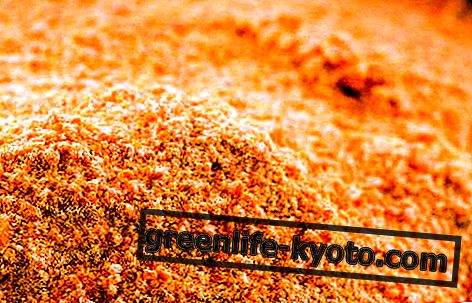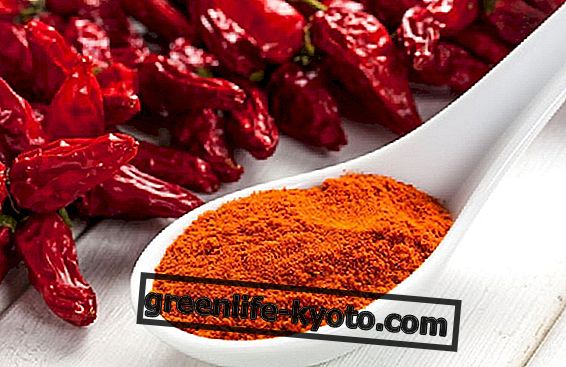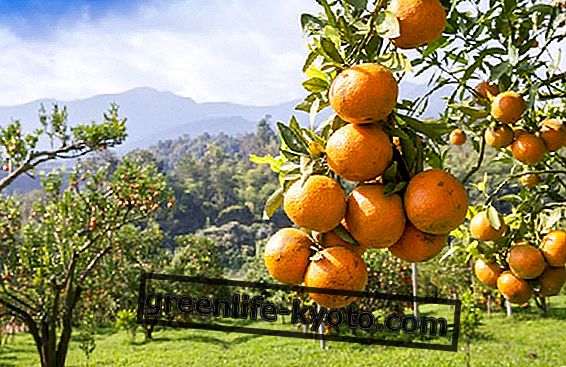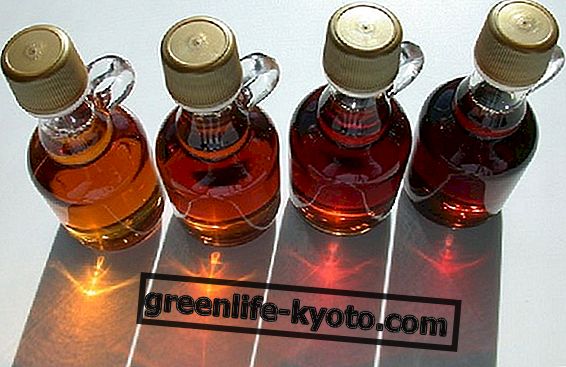
There are many species of thyme with very different characteristics from cultivar to cultivar. Some thymes have erect bearing and therefore form bearings or bushes even of considerable size, while others develop more horizontally creating crawling mats on the ground.
Some timi are more suitable for use in the kitchen while others are more used for their ornamental beauty in the garden. Let's get to know some of the thyme varieties.
Description of the plant
Thyme is a perennial herbaceous plant with small ovoid or elliptical leaves and their color varies from light green to dark green, with shades of yellow, white or gray depending on the variety of thyme.
Its flowers are very small and have a labiate shape, in fact the botanical family to which the thyme plants belong is that of the Labiate . The color of the flowers can vary from white to pink, from violet to red and the flowering period extends from the end of spring to the first colds that occur late in the summer.
Thyme is an aromatic plant, in fact it contains, inside its leaves, small drops of essential oil that give the typical smell and taste of thyme. Thyme is used both for leaves and flowers for their aroma and for the beneficial properties they bring to our body.
Thymus vulgaris
Thymus vulgaris is the best known of the thyme species precisely because it is the most used in cooking as a condiment and a spice. This thyme grows spontaneously in the Mediterranean lands where it finds drained, calcareous and well exposed to the sun.
The leaves are very small in size less than a centimeter, their shape is lanceolate and the color is a green that tends to gray. The underside of the leaf has a slight down.
The flowers are white or rosé always small in size and flowering from April to late summer.
This thyme was already used by the ancients both for its therapeutic properties to fight coughs and colds and as a love in the kitchen to flavor dishes.
In aromatherapy from thymus vulgaris, the essential oil of thymol is extracted which in phytotherapy is useful as a natural fungicide . This thyme is even loved by bees who make it an excellent honey with balsamic and expectorant properties already known in Ancient Greece.
Thymus serpillum
The Thymus serpillum as its name indicates has a creeping habit that covers the surface of the ground creating a turf. This thyme grows throughout Europe and particularly in the lands of the North, but also in the Mediterranean area and in Asia. It prefers drained, sandy soils, well exposed to the sun.
The branches of the Thymus serpillum are longer and glabrous than the variety Vulgaris. The other characteristics vary considerably depending on the conditions in which it grows, in fact, depending on the climate and the type of soil it may have pink, white or purple flowers, it can vary the height and also change the percentage of essential oil within the leaves.
However these variations do not affect its use both culinary and therapeutic so that the Serpillum is widely used for the creation of natural remedies . In the gardens and in particular in the rose gardens this thyme is often cultivated because it creates a flowery carpet that extends noticeably horizontally and is extremely aromatic, moreover, very importantly, it does not suffer the trampling being very rustic and robust.
Thymus citriodorus
Thymus citriodorus is a thyme with a particular lemon flavor . Compared to other thyme species that need extremely sunny exposure, the Thymus citriodorus also grows well in a half-shade position.
However, it does not like wetlands and stagnant water, so the soil suitable for its cultivation remains dry and loose. Its stem is erect and can grow up to 50 centimeters in height.
The leaves can be dark green or have tones ranging from deep yellow to golden yellow. Furthermore they can be solid or with variegations or color specks. The flowers are usually white, always gathered in spike inflorescences.
Of the Thymus citriodorus the leaves are used in particular to flavor dishes thanks to its intense lemon aroma.
Both fresh and dried are excellent, as the thyme still retains its aroma even after drying. We will be able to use this thyme for many confectionery preparations in sorbets and ice creams, in creams and mousses, in spirits and infusions.
Thymus pseudolanuginosus
The Thymus pseudolanuginosus is known precisely for its bearing which covers the ground rising from it to the maximum of 3 centimeters.
This thyme is very similar to moss even though it is a real thyme, both for the content of essential oils, typical of these plants, and for the botanical characteristics of these perennial herbaceous plants.
Among the varieties of thyme is certainly the one that is most often used as a ground cover in gardens even if it is not easy to find it for sale in nurseries or in specialized stores such as the agrarian.
Conclusions
There are other numerous species and subspecies of thyme that have been selected and cultivated over time by enthusiasts and still today new varieties are born.
The thyme plant is in fact easily cultivable and as we have said it has numerous uses from the ornamental to the culinary and curative. To choose the most suitable variety of thyme for us, it will always be good to seek advice from an expert in the field or choose from the most known and most common varieties we have listed.













